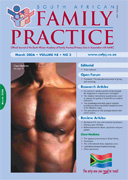The corticosteroid dose-response curve in asthma and how to identify patients for adjunctive and alternate therapies
Abstract
Asthma is an inflammatory disorder of the airways and inhaled corticosteroids are the most effective agents in controlling the disease process. The corticosteroid-dose response curve has traditionally been thought of as being flat, i.e. plateaus early, with no further therapeutic response with increasing dose of medication. This is only true for mild asthma and the improvement in airway calibre that occurs as inflammation subsides. For other parameters of asthma control, the dose- response curve is shifted to the right (i.e. control takes longer to achieve) and for severe asthma and bronchial hyper-responsiveness, the curve is much steeper (an almost linear relationship). Thus, for PEFR or FEV1, the curve plateaus at about 400-800 ug BDP equivalent per day (depending on asthma severity), whilst doses greater than 1000 ug per day control bronchial hyper-reactivity much better. In assessing the efficacy of asthma medication, the current literature is confusing in that response criteria are chosen arbitrarily (e.g. a 10% improvement in FEV1) and can mislead if results are extrapolated to other components of asthma control that were not studied. Thus one needs to appreciate data in the appropriate research context. Asthma control should be gauged using composite measures of as many variables in the goals of therapy as possible. Failure to achieve these goals is an indication that the ICS dose should be increased or that an additional agent should be added when one needs to limit steroid side-effects. Co-administration of LABA/ICS remains the most effective strategy (especially in the combination product), that allows for superior asthma control, with leukotriene antagonists and theophylline being alternate choices. (SA Fam Pract 2006;48(2): 34-42)
Section
CPD
By submitting manuscripts to SAFP, authors of original articles are assigning copyright to the South African Academy of Family Physicians. Copyright of review articles are assigned to the Publisher, Medpharm Publications (Pty) Ltd, unless otherwise specified. Authors may use their own work after publication without written permission, provided they acknowledge the original source. Individuals and academic institutions may freely copy and distribute articles published in SAFP for educational and research purposes without obtaining permission.

